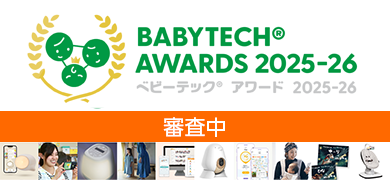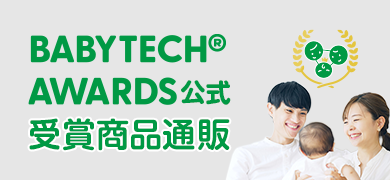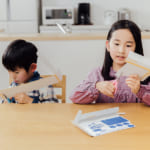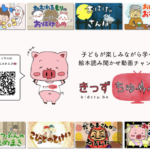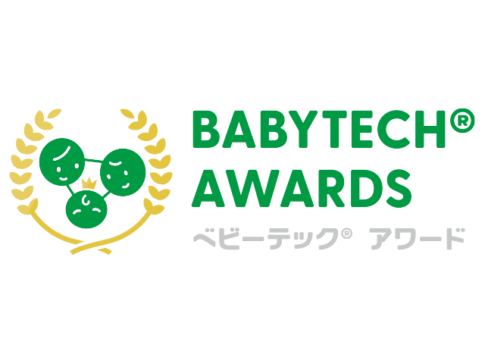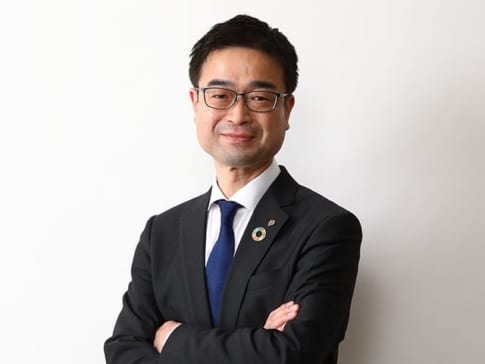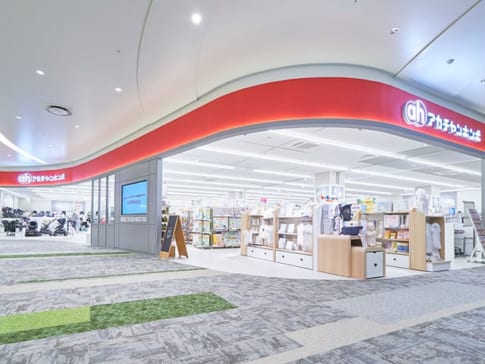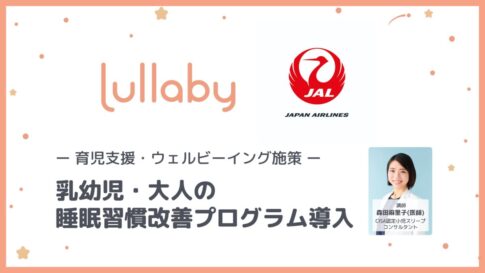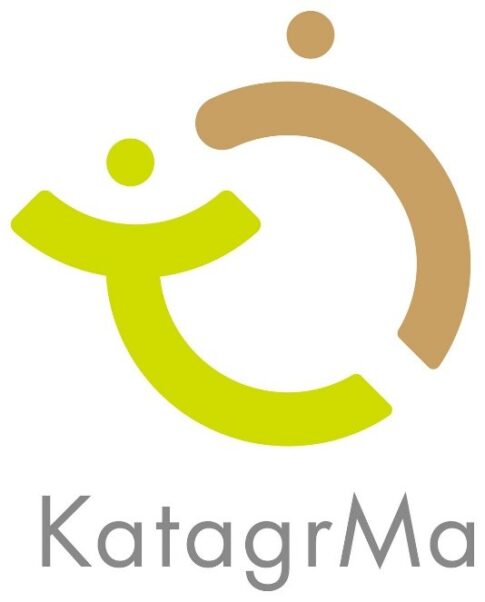- No special preparation or work is required, and light and sound reliably support watchful behavior during nap time.
- It also notifies you of behaviors that can lead to children "falling asleep on their backs," such as "big turn-over."
- Video recordings of children and watched behavior. Can be used as evidence and educational materials.
Every day, children at daycare centers need to sleep through the night. During this nap time, the childcare staff must watch over the children to prevent SIDS (Sudden Infant Death Syndrome), the cause of which is still unknown. Various systems have been developed to support this watchful care, such as "placing children on a special mat that detects the child's condition (mat method)" and "attaching a sensor that detects the child's condition to the child's clothing (sensor method). The editorial department of BabyTech.jp interviewed Mr. Yoshihiro Shibuya of Tripod Works, the developer of "Bebisapo" (honorifics omitted), and asked him about the service, its development process, and future development. The interview covered an overview of the service, how it was developed, and its future development.

Shibuya talked about "Bebisapo.
(We spoke to...)
Tripod Works, Inc. General Manager, Image Solution Dept.
Yoshihiro Shibuya
The system provides support for "watching over the nap" without increasing "unnecessary work"!
Editorial:Can you give us an overview of Bebisapo and its features?
Shibuya:Bebisapo" consists of a "camera" that takes pictures of children sleeping in their beds, a "tablet" that displays images and various information, and a "lamp" that sends out various notifications. The basic mechanism is as follows. First, after 4 minutes and 30 seconds have elapsed since the start of the noon-sleep monitoring mode, when there is no movement of the children and no action by the caregivers, the light of the lamp, which is usually green, changes to yellow. When a caregiver checks the sleeping posture of children in nap mode, the camera detects the behavior and the light turns back to "green". If the caregiver fails to come to check the sleeping posture of the children within 30 seconds (within 5 minutes of the previous monitoring action), the light of the lamp will turn to "red" and a sound (birdsong) will be emitted to alert the caregiver that the children are not awake. When the childcare worker checks the sleeping posture of the children, the sound will automatically stop and the lamp will turn back to green. After another 4 minutes and 30 seconds, the light turns yellow and ...... repeats the process.
Editorial:This means that you will be notified every 5 minutes so that you do not accidentally forget to watch over your child during the nap by the childcare staff.
Shibuya:That is correct. We originally developed "Bebisapo" with the aim of supporting childcare workers who watch over children during their nap time. Behind this was the "five-minute watch-over action," which the Ministry of Health, Labour and Welfare (MHLW) has announced as a measure against SIDS (Sudden Infant Death Syndrome). In developing "Bebisapo," we thought that the probability of preventing SIDS would increase if this "five-minute watch-and-wait action" was followed without omission.

A set of lamps, camera, and tablet that make up "Bebisapo".
Editorial:According to your company's pamphlet, "Bebisapo" also notifies you when a child "sleeps on his/her back," which can be dangerous.
Shibuya:The previous function to support watching over children every 5 minutes is supported by one camera for 5 to 6 children, but if you want to detect "sleep on the floor", use one camera for each child. In this turnover monitoring mode, if the system detects "a large turnover that leads to a prone sleeping position," the lamp will turn yellow, and after 30 seconds, the lamp will turn red to notify the user. Then, when the childcare worker adjusts the sleeping position of the child, the lamp will turn back to green again. This setting is applicable to children from 2 or 3 months to 6 months of age who cannot turn over by themselves, children who are not in good physical condition, and other children who need to be watched with special care.
Editorial:Does "Bebisapo" detect "large tossing and turning" rather than "lying on one's back" itself?
Shibuya:There is a little background to this. The impetus for the development of "Bebisapo" came from a request from a childcare provider in Sendai City for the development of a system to detect children sleeping on their stomachs. However, when we checked the actual situation on site, we found that there were many different postures in which children were lying on their stomachs. From the perspective of our company, which specializes in video analysis, this meant that there was no clear definition of "prone sleeping. We have a variety of AI-based video analysis technologies, but without a definition of what "prone sleeping" is, there is no way to detect it.
Editorial:Indeed, unlike humans, it seems difficult for machines to judge "ambiguous conditions.
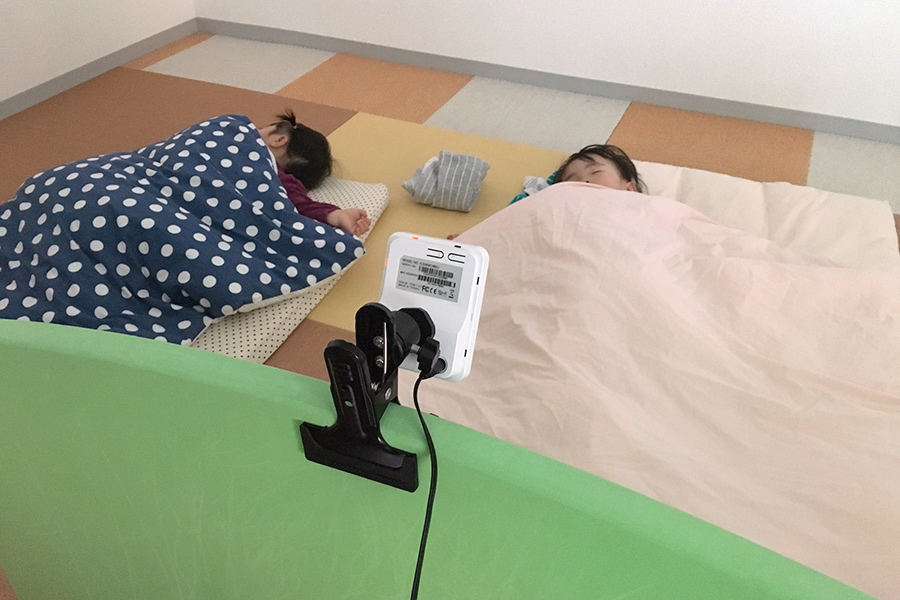
Camera watching over children sleeping in the afternoon
Shibuya:Therefore, we have fundamentally changed our thinking. In the field of childcare, childcare workers already check the sleeping posture of children every five minutes to correct prone sleeping. Therefore, we have simply adopted a system in which, when a child turns over, we immediately inform the childcare worker and ask her to check the child's sleeping posture. In this case, we have adjusted the system so that it does not detect small movements such as the Morrow reflex that do not lead to prone sleeping.
Editorial:It is true that the most reliable way is to have the nursery staff check it with their own eyes.
Shibuya:To summarize the use of "Bebisapo," when the lamp turns yellow or red, all the caregivers need to do is to check on the children as before and the lamp will return to its original green color without any operation. All you have to do is press the start button when the children go to sleep, and the camera automatically recognizes the images and provides the necessary support.
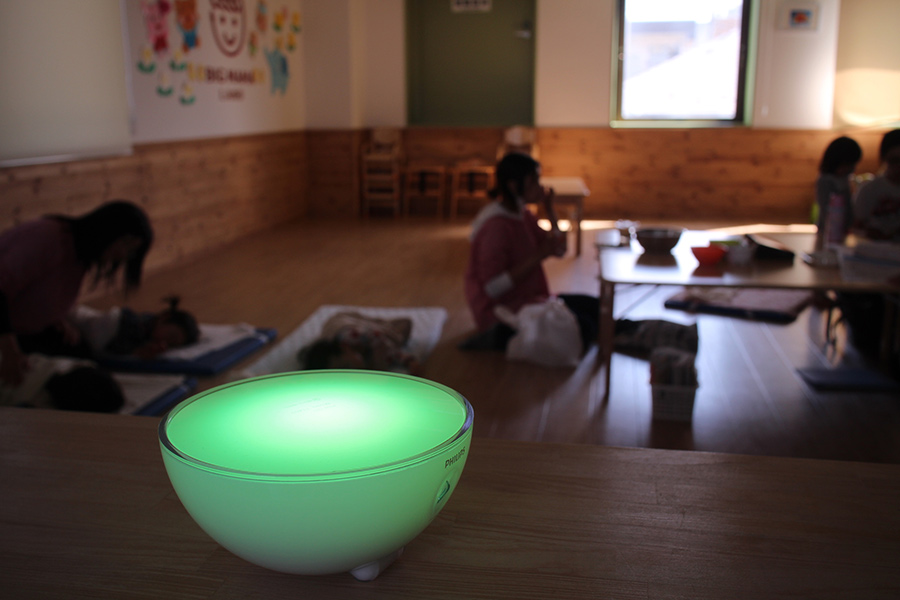
Softly glowing lamp in a nursery room
Editorial:It is easy to install, and the operation is hassle-free. Like other systems that monitor children during the daytime, there is no need to attach or remove sensors, spread mats, or clean up the room (......). By the way, how did you come up with the idea of using a lamp to notify the user?
Shibuya:The lamps used in "Bebisapo" emit soft indirect light, which is also used in interior design. To avoid waking the children, we aimed to inform them with as little noise as possible. Another reason for using the lamps is to allow other teachers to notice and respond to changes in lamp color when the childcare worker in charge has his/her hands full and is unable to move. In other words, this system aims to allow childcare workers to help each other, rather than having one childcare worker handle or be responsible for everything.
To help alleviate some of the "life-and-death workplace pressures." ......
Editorial:Bebisapo is a very unique system, how did you develop it?
Shibuya:As I mentioned earlier, the impetus for our development came from a request from a childcare provider in Sendai City for a system to detect sleep on the head. After placing our cameras in daycare centers and analyzing the daycare scene, as well as interviewing the daycare workers, the essence of the problem came to light. The essence of the problem became clear to us: the daycare center is an important place where life and death are involved, and all the childcare workers bear a heavy responsibility.
Editorial:What exactly does that mean?
Shibuya:The nursery school teachers told us, "Yes, we are watching over the children during nap time, but we are not sure if we can do it every five minutes. It is very rare that there is a pause. Other children would cry at the same time, or they would have to change a diaper or something, and before they knew it, five minutes would have passed. They also said that having no one but themselves to watch the children sleep in the field of childcare, where lives are entrusted to the caregivers, was a great mental burden for them. From the images captured by our cameras, it seemed that the actual childcare site was running well, but we thought that if the childcare workers felt this way, then we should support them .......
Editorial:It is true that the childcare teachers are very busy during the children's nap, and it may be difficult to reliably perform a watchful waiting action every five minutes without any support.
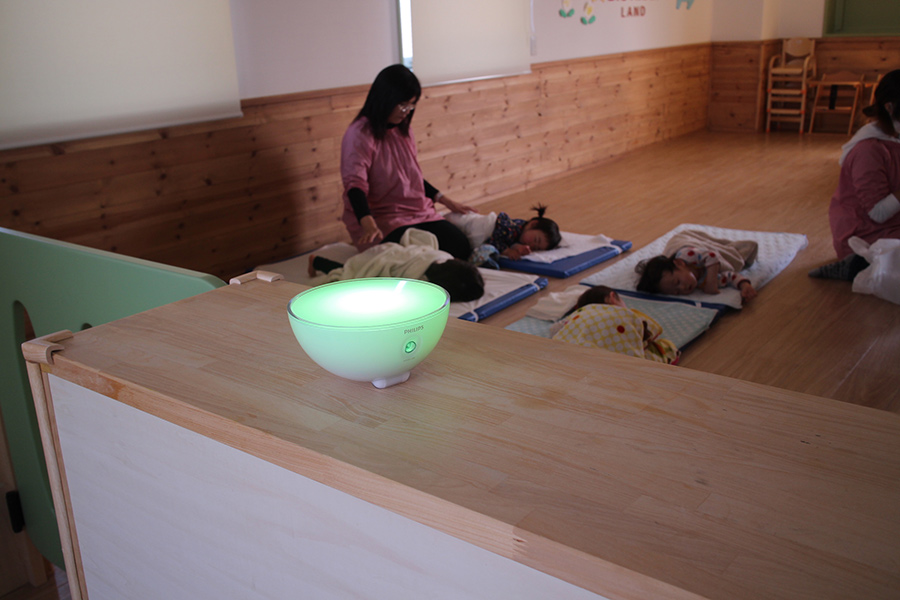
A great deal of pressure is being placed on the childcare workers who watch over the children.
Shibuya:To begin with, it would be impossible for anyone to remain completely focused for a long period of time, as the human brain naturally has a tendency to think about other things. One of the nursery schools that use Bebisapo has told us, "Keep an eye on the children while they are sleeping in the afternoon! When the lamps turn yellow or red, look around the children to make sure there are no problems," instead of vague instructions such as "Keep an eye on the sleeping children! In such workplaces, it is essential to have support tools to prevent human error and a system that allows objective review to prevent the recurrence of accidents. Therefore, "Bebisapo" has aimed to be a tool that would make people think about becoming a childcare worker if such a backup system is available, given the current situation where there are not enough childcare workers to fill the positions. In fact, we have received inquiries from nursery school operators, such as, "Does your school have Bebisappo? We hope that we can help create an environment where childcare workers can work comfortably, even if just a little. We hope that we can help create an environment where childcare workers can work comfortably, even if just a little.
Editorial:So it is also connected to "environmental improvement" for all childcare workers to work with peace of mind.
Shibuya:Another question we asked the nursery school teachers before development was whether they would not like to be filmed by a video camera. Surprisingly, they said that they would rather be filmed. They wanted us to record their efforts in childcare, and they also wanted us to be able to verify their efforts in case of emergency if they were not documented. This is why we started developing "Bebisapo" not as a sensor to detect children falling asleep on their backs, but as a system to back up the nursery staff's response and the operation of the daycare center. It was just around 2016.
The "Video of the Childcare Field" improves the "Quality of Childcare."
Editorial:How is the video recorded by "Bebisapo" used?
Shibuya:Bebisapo's recordings show at a glance which events occurred during recording. There is a "light yellow band," "dark yellow band," and "red band" in the display showing the entire recording time, indicating respectively that "the lamp turned yellow because there was no movement during 4 minutes and 30 seconds," "the child turned over in a big way leading to falling asleep," and "the lamp turned red because the childcare worker did not look around within 5 minutes. The lamps indicate that the child has turned yellow because there was no movement. If you select one of those colored time periods, you can see the baby's condition and what the nursery staff was doing at that time in the video. For example, if you can see from the video that the nursery worker was changing diapers and was late in going to check the diapers (......), you can improve your work by sharing the responsibility for checking the diapers with another nursery worker.
Editorial:What were you doing at this time!" and you can look back on the situation accurately without having to question the childcare provider.
Shibuya:People do not remember situations in that much detail. We believe that the best feature is that we can look back later and improve our operations.
Editorial:This is going to lead to "improvement of the quality of childcare".
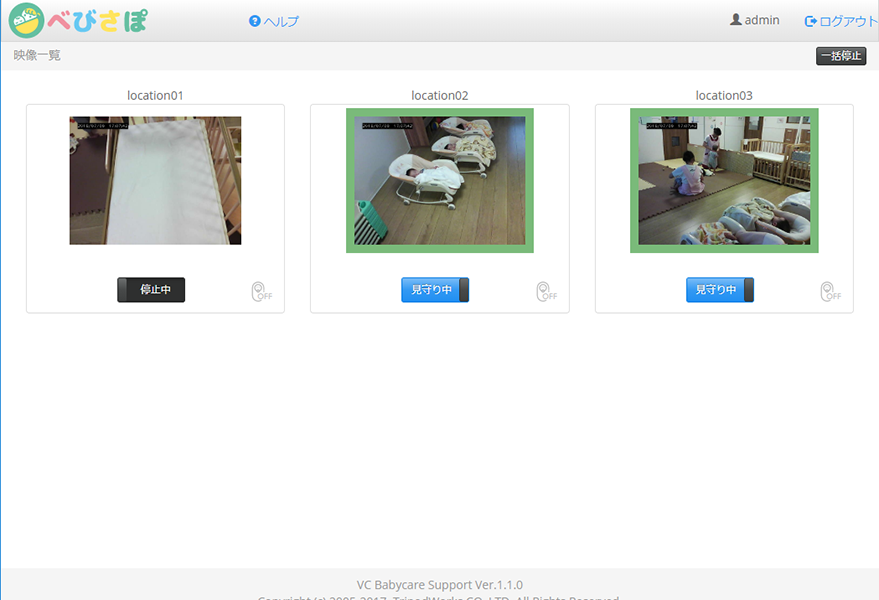
Bebisapo" video is displayed on a tablet device.
Shibuya:Yes, we do. We believe that by using these tools, we can take measures to prevent accidents before they happen. Also, when a childcare worker sees how another childcare worker does something on video, he or she can say, "Oh, so this is how this person does it. I can learn from her. In other words, video has an educational effect. In other words, videos have an educational effect, and they can be a good teaching tool for childcare workers.
Editorial:How is "Bebisapo" currently being introduced?
Shibuya:Thanks to your support, we have received many inquiries and inquiries, and we have introduced the system to nursery schools from Aomori Prefecture in the north to Okinawa Prefecture in the south. However, the reality is that many of the nurseries we have been approached by do not have the budget to invest in equipment, and in many cases they have been put off by the fact that they would consider introducing the system if their local government had a subsidy program (see ......).
Editorial:The Tokyo Metropolitan Government, for example, actively provides subsidies related to IT equipment, but the rest of the world is very strict. ...... What kind of feedback do you get from nurseries that have actually introduced the system?
Shibuya:We have received comments such as, "It is good that the director, who is watching the nap on video in real time, and the childcare worker in charge on site can double-check the system," and that the double-checking by both people and the system is reassuring. Many also comment that they appreciate the fact that when something goes wrong, the video remains as evidence that the childcare staff handled the situation properly. We also hear that when we tell parents that we have such a system in place, they are very relieved.
Editorial:I also have a 1.5 year old daughter in daycare, and I would love to see a system like this introduced.
From the "analysis of the images," we may be able to detect signs of disease!
Editorial:Finally, can you tell us about your future plans?
Shibuya:For example, by accumulating video records and analyzing the "state of the children," "lighting of lamps," and "good and bad behavior of the nursery staff," a more advanced image analysis AI system may be possible. This could enable the system to detect danger in advance or detect signs of illness.
Editorial:Like, "Be careful if your child moves in this way"?
Shibuya:Yes, it is. If there are signs of danger, it will be possible to have an AI analyzing the images learn them and deter them in advance. The more important thing is to "predict and avoid danger in advance," and I believe that our challenge for the future will be how to realize this.
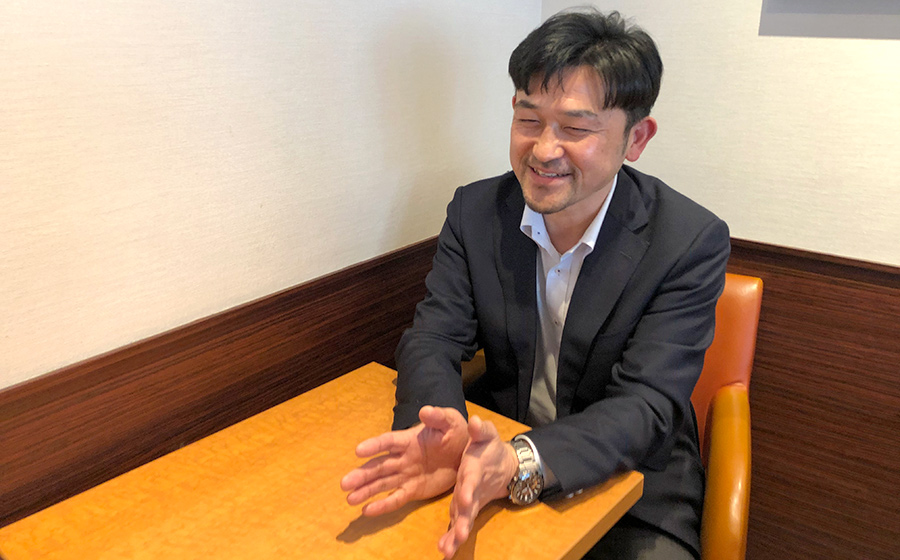
Mr. Shibuya talks about the future of Bevisapo.
After the interview
Companies working on "nap monitoring systems" are currently trying to detect signs of illness from data such as children's body temperature, body movements, and heartbeats, but "Bebisapo" is working on this from "images. Since "images" are extremely informative data, there may be great possibilities and discoveries to be made in the future, depending on the analysis conditions and accuracy of the accumulated data. If a system to support the monitoring of children sleeping through the night becomes widespread and eases the mental burden of childcare workers, the number of people who want to become childcare workers will surely increase. To this end, support from local governments is indispensable. I would like to see local governments across the country enhance their subsidy programs for the introduction of IT systems.
Tripod Works, Inc. official website
https://www.tripodworks.co.jp/
Bebisapo" official website
https://www.tripodworks.co.jp/products/babycaresupport/

